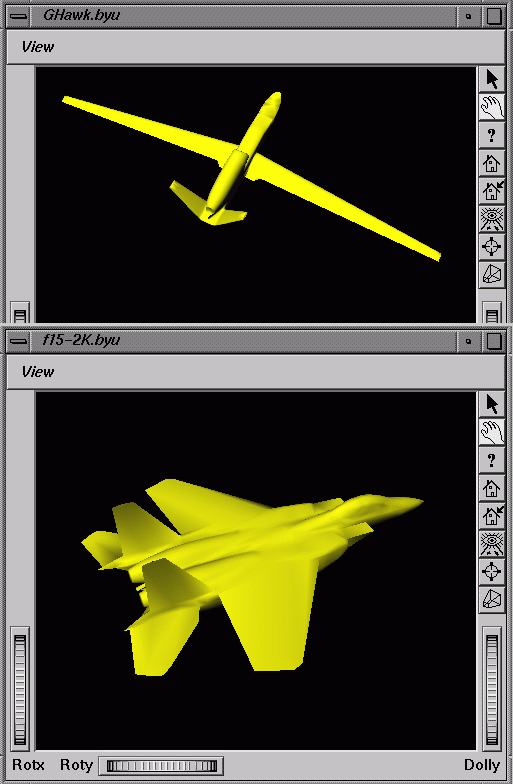
Usually, any code performing electromagnetic calculations requires, as a part of the input, a target model.
In order for a model to be acceptable to a particular computational software, it must satisfy a set of specific requirements determined by the design and algorithms of this software.
Some computational systems include components for building target models, and some assume that the models, in suitable format, must be supplied by the user.
DOVA was conceived and designed to utilize already existing platform models.
Such models may be available from an aircraft manufacturer or a commercial vendor. They may have also been generated with the use of scanning technology or built with one of the many commercially available design packages.
Typically, aircraft or other platform models are created by computer aided design (CAD) software systems which let the user output a representation of the model in some electronic format, usually, specific for the utilized CAD system.
In order to exchange information between different CAD systems, various translators/converters have been developed.
Such translators are supposed to make a representation developed by one system readable by another system.
However, such a translation/conversion can be a very complex process and certain information in this process may be lost or distorted.
Consequently, as a general rule, it is a good practice to examine the model for consistency and absence of defects.
In order to make this task easier for the DOVA user, we identified several very basic requirements that models intended to be analyzed with DOVA should satisfy.
